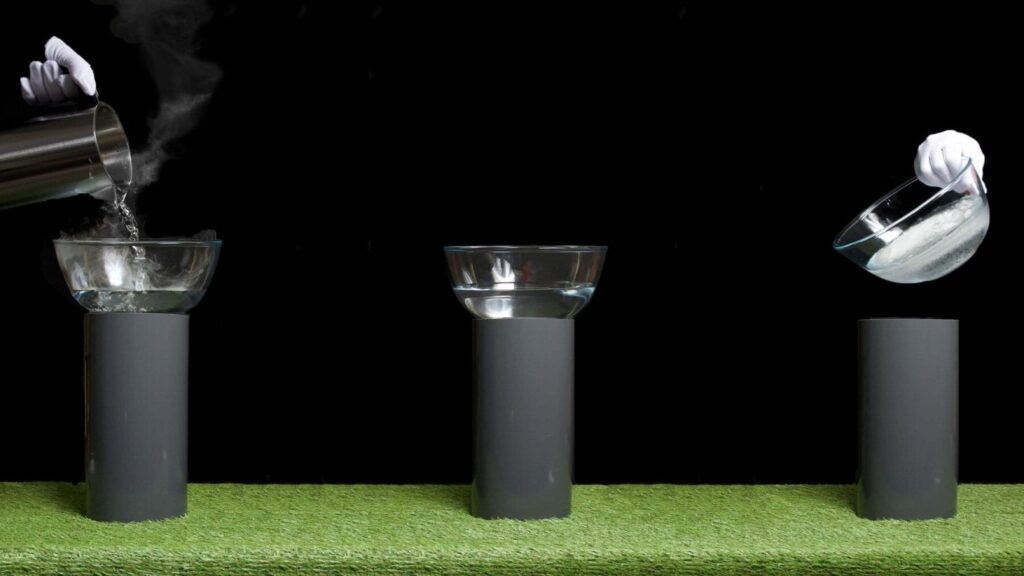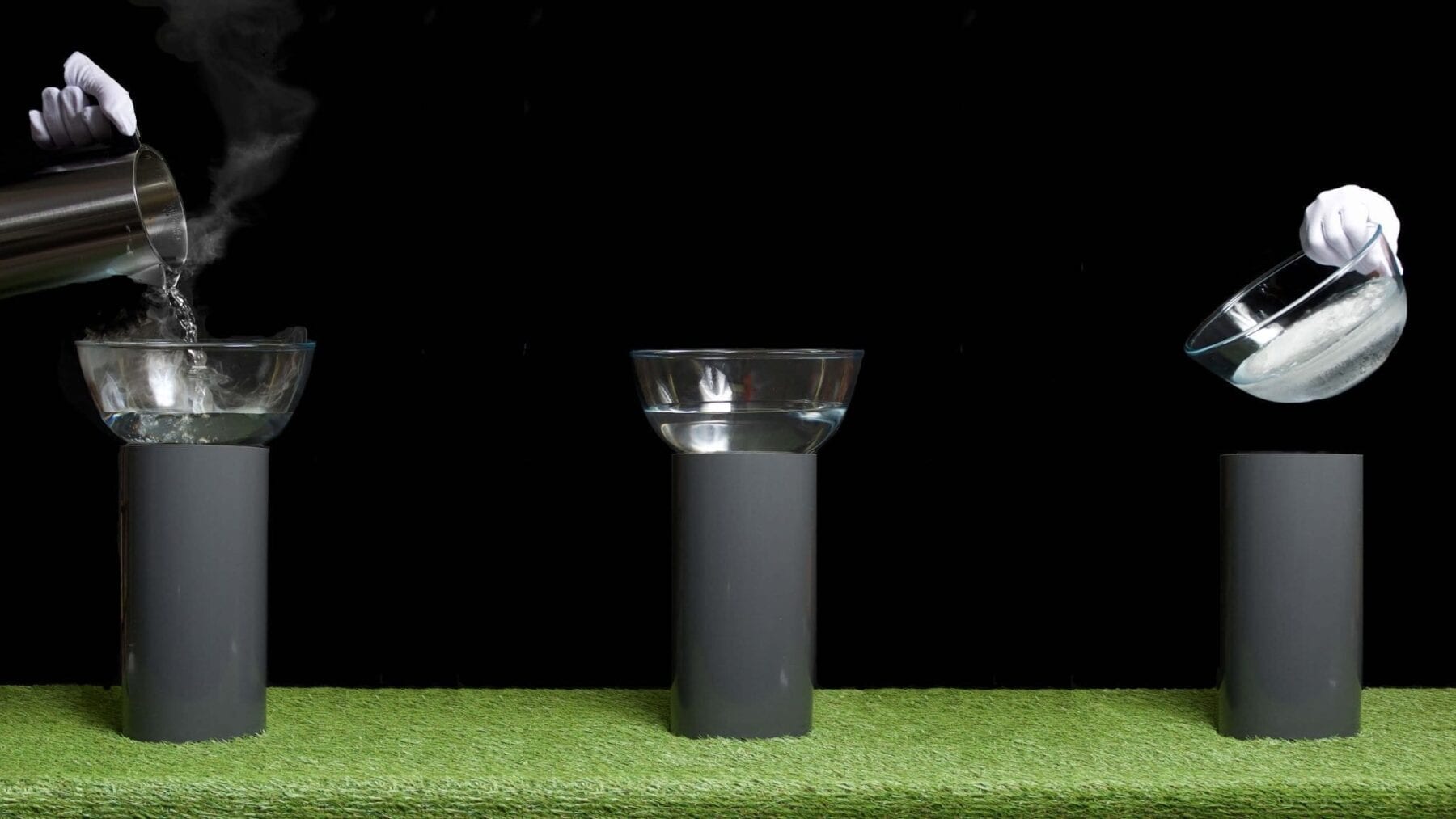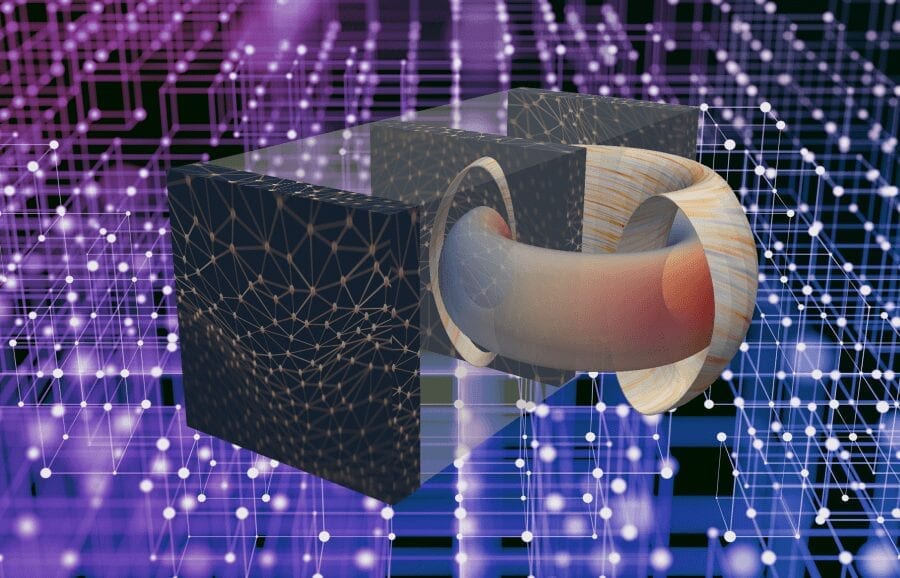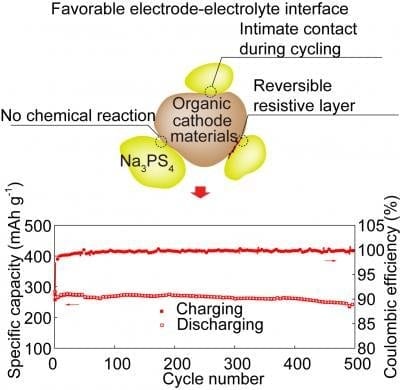
Physicists at the University of Zurich have developed an amazingly simple device that allows heat to flow temporarily from a cold to a warm object without an external power supply. Intriguingly, the process initially appears to contradict the fundamental laws of physics.
If you put a teapot of boiling water on the kitchen table, it will gradually cool down. However, its temperature is not expected to fall below that of the table. It is precisely this everyday experience that illustrates one of the fundamental laws of physics – the second law of thermodynamics – which states that the entropy of a closed natural system must increase over time. Or, more simply put: Heat can flow by itself only from a warmer to a colder object, and not the other way round.
Cooling below room temperature
The results of a recent experiment carried out by the research group of Prof. Andreas Schilling in the Department of Physics at the University of Zurich (UZH) appear at first sight to challenge the second law of thermodynamics. The researchers managed to cool a nine-gram piece of copper from over 100°C to significantly below room temperature without an external power supply. “Theoretically, this experimental device could turn boiling water to ice, without using any energy,” says Schilling.
Creating oscillating heat currents
To achieve this, the researchers used a Peltier element, a component commonly used, for example, to cool minibars in hotel rooms. These elements can transform electric currents into temperature differences. The researchers had already used this type of element in previous experiments, in connection with an electric inductor, to create an oscillating heat current in which the flow of heat between two bodies perpetually changed direction. In this scenario, heat also temporarily flows from a colder to a warmer object so that the colder object is cooled down further. This kind of “thermal oscillating circuit” in effect contains a “thermal inductor”. It functions in the same way as an electrical oscillating circuit, in which the voltage oscillates with a constantly changing sign.
Laws of physics remain intact
Until now, Schilling’s team had only operated these thermal oscillating circuits using an energy source. The researchers have now shown for the first time that this kind of thermal oscillating circuit can also be operated “passively”, i.e. with no external power supply. Thermal oscillations still occurred and, after a while, heat flowed directly from the colder copper to a warmer heat bath with a temperature of 22°C, without being temporarily transformed into another form of energy. Despite this, the authors were also able to show that the process does not actually contradict any laws of physics. To prove it, they considered the change in entropy of the whole system and showed that it increased with time – fully in accordance with the second law of thermodynamics.
Potential application still a long way off
Although the team recorded a difference of only about 2°C compared to the ambient temperature in the experiment, this was mainly due to the performance limitations of the commercial Peltier element used. According to Schilling, it would be possible in theory to achieve cooling of up to -47°C under the same conditions, if the “ideal” Peltier element – yet to be invented – could be used: “With this very simple technology, large amounts of hot solid, liquid or gaseous materials could be cooled to well below room temperature without any energy consumption.”
The passive thermal circuit could also be used as often as desired, without the need to connect it to a power supply. However, Schilling admits that a large-scale application of the technique is still a long way off. One reason for this is that the Peltier elements currently available are not efficient enough. Furthermore, the current set-up requires the use of superconducting inductors to minimize electric losses.
Established perceptions challenged
The UZH physicist considers the work more significant than a mere “proof-of-principle” study: “At first sight, the experiments appear to be a kind of thermodynamic magic, thereby challenging to some extent our traditional perceptions of the flow of heat.”
Learn more: Thermodynamic Magic Enables Cooling without Energy Consumption
The Latest on: Thermal oscillating circuit
[google_news title=”” keyword=”thermal oscillating circuit” num_posts=”10″ blurb_length=”0″ show_thumb=”left”]
via Google News
The Latest on: Thermal oscillating circuit
- The 7 Best Thermal Scopes of 2024on April 17, 2024 at 7:02 am
The Sig Sauer ECHO3 is packed with features and won’t completely break the bank. The SNIPE-IR Thermal Clip-On works in conjunction with your regular sight, but can be easily removed if not needed.
- The Best Circuit Breakers for Homes, Businesses, RVs, and Boatson April 10, 2024 at 8:16 am
While standard AC electrical breakers can’t handle this arc, the Chtaixi DC circuit breaker can. It uses a thermal-magnetic trip to perform what is called “arc extinguishing,” thus safely ...
- What is thermal throttling and how does it affect frame rates?on April 3, 2024 at 5:00 pm
If you’ve ever been playing a game just fine and then found your fans spinning up fast and loud and your frame rate tanking, you may have become a victim of thermal throttling. It’s when your ...
- News tagged with thermal conductivityon March 27, 2024 at 5:01 pm
Ever since its discovery in 2004, graphene has been revolutionizing the field of materials science and beyond. Graphene comprises two-dimensional sheets of carbon atoms, bonded into a thin ...
- How can you change a circuit?on March 19, 2024 at 7:01 am
Adding more batteries to a simple circuit will increase the electrical energy, which will make a bulb brighter. Electricity can flow through the components in a complete electrical circuit.
- Researcher discovers new technique for photon detectionon December 12, 2023 at 11:40 pm
But Chanda has developed a way to detect photons by modulating the frequency of an oscillating circuit, paving the ... and slow response due to the higher thermal noise intrinsic to room ...
- Thermal Switches and Thermal Protectors Informationon July 4, 2022 at 7:02 pm
The contacts movement may be accompanied by a faint audible as power to the electrical circuit is interrupted. They are often used as thermal protection devices to prevent damage from over-heating of ...
- Thermal Hotels Near Coachella Desert Circuit Horse Showon August 15, 2020 at 9:10 am
Why you should consider consulting feesThere are several benefits to charging fees, and I encourage you to consider implementing consulting fees into your travel... Client's DUI could keep him out ...
- Thermal imaging electrical maintenance applicationon August 8, 2020 at 12:04 pm
Capture thermal images of all electrical panels and other high-load connection points, including drives, disconnects, and controls. Wherever you discover higher temperatures, follow that circuit and ...
- Circuit VR: Oscillating Bridgeson April 27, 2018 at 12:24 am
Circuit VR is where we talk about a circuit and examine how it works in simulation with LT Spice. This time we are looking at a common low-frequency oscillator known as the Wien bridge oscillator.
via Bing News










